| Srl | Item |
| 1 |
ID:
163929
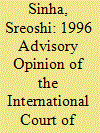

|
|
|
| 2 |
ID:
117107


|
|
|
| 3 |
ID:
191485
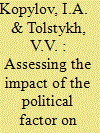

|
|
|
|
|
| Summary/Abstract |
This paper offers a definition of the scientific term "political factor." It offers a classification based on numerous criteria and grounds, as well as a methodology of assessing its influence on national defense management in the Russian Federation in light of the destructive policies of the US and its allies.
|
|
|
|
|
|
|
|
|
|
|
|
|
|
|
|
| 4 |
ID:
188816
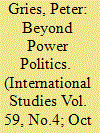

|
|
|
|
|
| Summary/Abstract |
A growing literature demonstrates that ideology shapes international relations. But just how does ideology have its effect? This article develops an integrated model of mediators and moderators of the impact of ideology on foreign policy. Specifically, it hypothesizes that ideologically motivated perceptions of threat and national power sequentially mediate the impact of individual-level ideologies on foreign policy preferences, and that in/out-group social categorization processes moderate the relationship. We interrogate these propositions with three plausibility probe case studies. The conclusion discusses which aspects of the model were best supported by the plausibility probes—and suggests hypotheses for future causal testing.
|
|
|
|
|
|
|
|
|
|
|
|
|
|
|
|
| 5 |
ID:
084693


|
|
|
| 6 |
ID:
093925
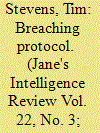

|
|
|
|
|
| Publication |
2010.
|
| Summary/Abstract |
China continues to invest in computer network operations, posing a cyberespionage threat. Tim Stevens investigates China's information warfare capabilities and its global implications.
|
|
|
|
|
|
|
|
|
|
|
|
|
|
|
|
| 7 |
ID:
074607
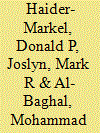

|
|
|
|
|
| Publication |
2006.
|
| Summary/Abstract |
In political disputes, issue frames set parameters for debate and shape which view dominates. This study expands issue framing research to examine the influence of frames on the perception of future terrorist threats as well as subsequent support for related counterterrorism policies. We test several hypotheses using data from an experimental field poll. We find that issue frames clearly influence perceptions of threat. However, our frames, which posit specific terrorism threats, only have a limited influence on respondent preferences for counter-terrorism policies. We consider a variety of explanations for these results and provide direction for future research.
|
|
|
|
|
|
|
|
|
|
|
|
|
|
|
|
| 8 |
ID:
109800
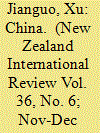

|
|
|
| 9 |
ID:
133795
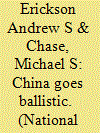

|
|
|
|
|
| Publication |
2014.
|
| Summary/Abstract |
China's growing missile and nuclear forces will pose a complex, challenging threat to America and its allies.
CHINA IS INCREASINGLY A FORCE TO BE RECKONED WITH, not only economically but also militarily. Its aggressive stance toward some of its neighbors, along with Asia's growing economic importance and the need to assure U.S. allies that Washington will increase its attention to the region despite budgetary challenges and fractious domestic politics, prompted the Obama administration to announce a "rebalance" toward Asia.
|
|
|
|
|
|
|
|
|
|
|
|
|
|
|
|
| 10 |
ID:
133977
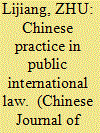

|
|
|
|
|
| Publication |
2014.
|
| Summary/Abstract |
This Survey covers materials reflecting Chinese practice in 2013 relating to: Fundamental Principles of International Law (The Principle of Equality of State Sovereignty; Permanent Sovereignty over Natural Resources; Prohibition of Threat or Use of Force; Peaceful Settlement of International Disputes; Non-intervention in Internal Affairs); Sources of International Law (Identification of Customary International Law; Guide to Practice on Reservations to Treaties; Provisional Application of Treaties); Relationship between International Law and Chinese Law (Act on Administration of Tax Collection Revised; Act on the Prevention and Control of Environmental Pollution by Solid Wastes Revised; Act on Seed Revised; Act on Animal Epidemic Prevention Revised; Act on Trade Mark Revised; Act on Fishery Revised; Act on Marine Environment Protection Revised; Act on Customs Revised); Recognition of New States (Palestine; Kosovo); Jurisdiction and Immunity (Scope and Application of Universal Jurisdiction; Immunity of State Officials from Foreign Criminal Jurisdiction); China's Territorial Integrity (Taiwan; Tibet; China-India Border; Diaoyu Island and its Affiliated Islands; Nansha Islands); Polar Regions (Arctic Council; Antarctic Treaty); International Law of the Sea (Submission to the Commission on the Limits of the Continental Shelf in part of the East China Sea; Commission on the Limits of the Continental Shelf (CLCS); International Seabed Authority (ISA); International Tribunal for the Law of the Sea (ITLOS); Marine Biodiversity beyond Areas of National Jurisdiction; Reorganization of State Ocean Administration); International Air and Space Law (Establishment of Air Defense Identification Zone in East China Sea; Peaceful Use of Outer Space; Transparency and Confidence-Building Measures in Outer Space; International Code of Conduct for Outer Space Activities); International Cyberspace Law (International Code of Conduct for Information Security; Cyber Crime); Aliens (Regulation on Administration of Exit and Entry); International Human Rights Law (Universal Periodic Review; Office of the High Commissioner for Human Rights (OHCHR); International Covenant on Civil and Political Rights (ICCPR); Convention against Torture and Other Cruel Inhuman or Degrading Treatment or Punishment (CAT); Convention on the Rights of the Child (CRC); Human Rights Treaty Bodies and Their Reform; Rights of Indigenous Peoples; Action Plan for Fighting Human Trafficking (2013-2020)); International Humanitarian Law (Protection of Civilians in Armed Conflicts; Protection of Journalists in Armed Conflicts); International Law on Disasters (Protection of Persons in the Event of Disasters); International Law on Arms Control, Disarmament and Non-proliferation (Nuclear Disarmament and Non-Proliferation; Chemical Weapons Convention; Biological Weapons Convention (BWC); Convention on Certain Conventional Weapons (CCW); Amended Protocol II to the CCW; Ottawa Convention; Convention on Cluster Munitions (CCM); Protocol V to the CCW (ERW); Improvised Explosive Devices (IEDs); Lethal Autonomous Robots; Arms Trade Treaty (ATT); Small Arms and Light Weapons; Conference on Disarmament (CD)); International Criminal Law (Crimes against Humanity; International Criminal Court (ICC); ICTY and ICTR; UN Comprehensive Convention against Terrorism; Agreement on the Procedure for Organizing and Conducting Joint Anti-Terrorist Exercises by Member States of the Shanghai Cooperation Organization; Agreement on the Procedure for Organizing and Conducting Joint Anti-Terrorist Operations within Member States of the Shanghai Cooperation Organization; Trafficking in Cultural Property; Ratification of the Treaty on Transfer of the Convicted between the People's Republic of China and the Republic of Kyrgyzstan; International Criminal Judicial Assistance and Police Cooperation); International Environmental Law (Climate Change; Sustainable Development; Protection of Atmosphere; Action Plan on Air Pollutio
|
|
|
|
|
|
|
|
|
|
|
|
|
|
|
|
| 11 |
ID:
133671
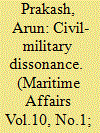

|
|
|
|
|
| Publication |
2014.
|
| Summary/Abstract |
The civil-military equation has been assigned great significance in the national security matrix, and experts consider that nations that fail to evolve a stable paradigm of civil-military relations squander their resources and run grave security risks. In India, this issue has failed to receive the importance it deserves because of the general indifference of the politicians to national security affairs on one hand, and the vested interest of the bureaucracy in maintaining the status quo on the other. It is believed that civil-military relations constitute a zero-sum game in which "civilian control" is retained by reducing the power of the military vis-à-vis the civilians. An irrational but subliminal fear of the military has led the Indian politicians to skew the civil-military equation in favour of the bureaucracy and, in a paradigm unique to India, to place the military under their control. Pointing to the military's sense of grievance and the vitiated atmosphere that prevails in the Ministry of Defence, the author reflects on the price being paid by the nation for endemic "civil-military dissonance" in terms of major national-security shortcomings, as well as the damage being inflicted on the institution of our armed forces.
|
|
|
|
|
|
|
|
|
|
|
|
|
|
|
|
| 12 |
ID:
109804
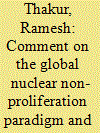

|
|
|
|
|
| Publication |
2012.
|
| Summary/Abstract |
Rajiv Nayan's article is both important and interesting. It is important because nuclear weapons pose a threat to humanity and the planet that in magnitude, severity and immediacy is the gravest of all known risks confronting us today.
|
|
|
|
|
|
|
|
|
|
|
|
|
|
|
|
| 13 |
ID:
170274
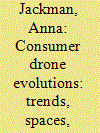

|
|
|
|
|
| Summary/Abstract |
While the drone has become synonymous with the War on Terror, the asymmetric iconography of the battlefield is shifting. Commercially available off-the-shelf (COTS) drones are increasingly prevalent features of global battlefields, employed by non-state actors in both visualising such spaces, and the directing and inflicting of harm. As such usage increases, so too do concerns around their evolving adoption, adaptation, and potential portability into homeland spheres. While cognizant of the range of positive drone applications, it is asserted that drones nonetheless remain simultaneously bound to an inverse potential for exploitation. In examining drone risk, this article approaches the consumer drone through a series of sites and spaces through which it is technically and socially constructed. Reflecting upon industry innovation, community-driven experimentation, and evolving airspace – it calls for greater attention to the drone’s malleability, arguing that understandings of COTS drones must remain attentive to both drone potential and potential drone threat.
|
|
|
|
|
|
|
|
|
|
|
|
|
|
|
|
| 14 |
ID:
128979


|
|
|
|
|
| Publication |
2014.
|
| Summary/Abstract |
Civil conflict appears to be contagious-scholars have shown that civil wars in a state's neighborhood make citizens more likely to rebel at home. However, war occurs when both rebels and the state engage in conflict. How do state authorities respond to the potential for civil conflict to spread? We argue that elites will anticipate the incentive-altering effects of civil wars abroad and increase repression at home to preempt potential rebellion. Using a Bayesian hierarchical model and spatially weighted conflict measures, we find robust evidence that a state will engage in higher levels of human rights violations as civil war becomes more prevalent in its geographic proximity. We thus find evidence that states violate rights as a function of the internal politics of other states. Further, we argue authorities will act not to mimic their neighbors but rather to avoid their fate.
|
|
|
|
|
|
|
|
|
|
|
|
|
|
|
|
| 15 |
ID:
162177
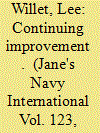

|
|
|
| 16 |
ID:
073346
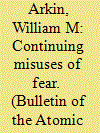

|
|
|
| 17 |
ID:
139044
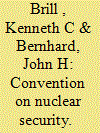

|
|
|
|
|
| Summary/Abstract |
In his 2009 speech in Prague, President Barack Obama declared, “[W]e must ensure that terrorists never acquire a nuclear weapon. This is the most immediate and extreme threat to global security.” To help deal with this threat, he said the world needed “durable institutions” devoted to the problem and announced that the United States would host a global summit on nuclear security in part to address that issue
|
|
|
|
|
|
|
|
|
|
|
|
|
|
|
|
| 18 |
ID:
176287
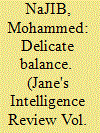

|
|
|
| 19 |
ID:
156479
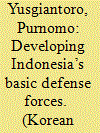

|
|
|
|
|
| Summary/Abstract |
The national resources of Indonesia have a major influence in developing the
nation’s basic defense forces. The state’s capacity to provide budgetary and human
resources is a major determining factor in building the nation’s basic defense
forces. Indonesia is currently not able to leapfrog into the development of ideal
defense forces directly due to constraints on national resources. Thus, the first
step is to focus on developing basic defense forces until the national resources
are sufficiently able to support the development of ideal defense forces. Basic
defense forces should be able to counteract not only fundamental threats (e.g. open
warfare), but also increasingly non-traditional threats, current and potential, to the
nation. An assessment of these non-traditional threats, namely terrorism, cyber
attacks, maritime security and internal disturbances, is important in order to design
basic defense forces, and it begins with a look at the dynamics of the strategic
environment that results in changes in the shape and spectrum of threats.
A key geopolitical concern is that the development of basic defense forces
is not meant to bring the region into an arms race situation. Rather, pursuing
multilateralism and building regional security architecture through international
bodies such as ASEAN are crucial to designing basic defense forces to successfully
eliminate non-traditional threats, as these are increasingly racing to the forefront
of not just national, but also regional, security concerns. This paper will explore
how Indonesia builds its basic defense forces with a focus on countering common
non-threat traditional threats. In order to build basic defense forces, the strategic
environment, the state’s budgetary constraints, the progress of regional defense
cooperation and the anatomy of common threats must be understood first.
|
|
|
|
|
|
|
|
|
|
|
|
|
|
|
|
| 20 |
ID:
133684
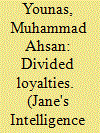

|
|
|
|
|
| Publication |
2014.
|
| Summary/Abstract |
The top leadership of the Jihadist militant organization Tehrik-e-Taliban Pakistan has fractured after months of infighting. Muhammad Ahsan Younas reviews the events that caused the group to fracture ant the implications for its future operations.
|
|
|
|
|
|
|
|
|
|
|
|
|
|
|
|